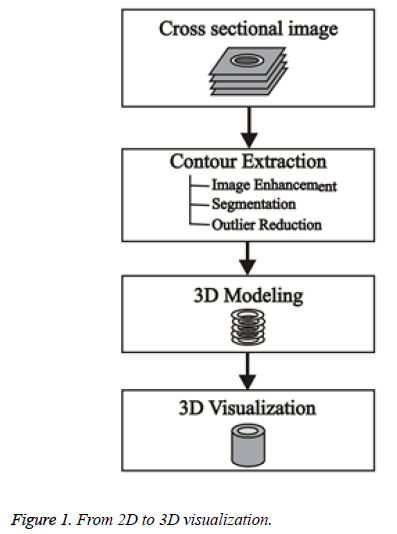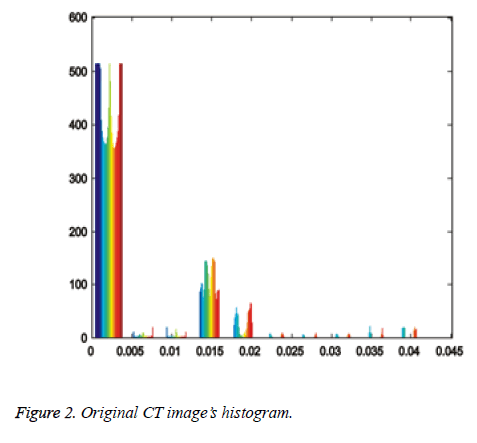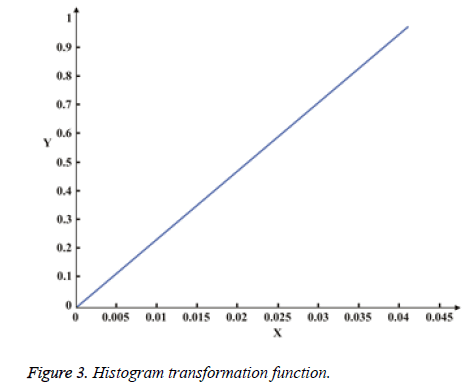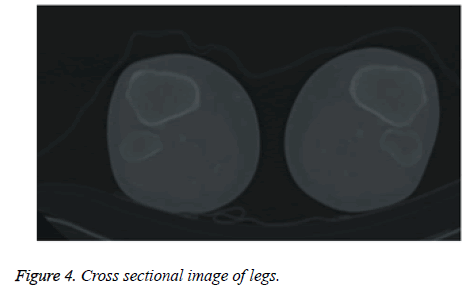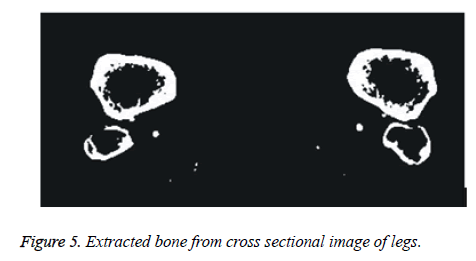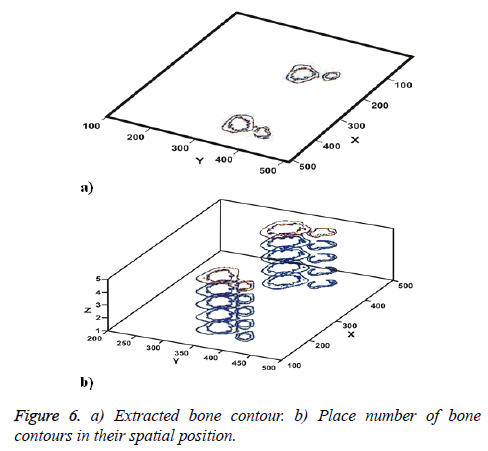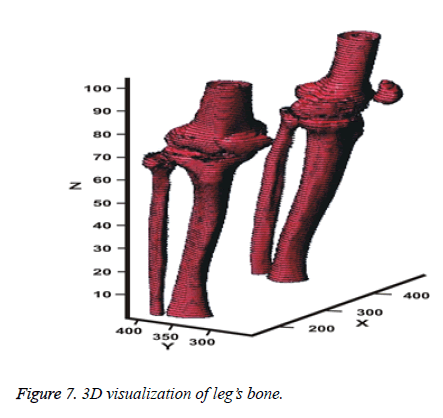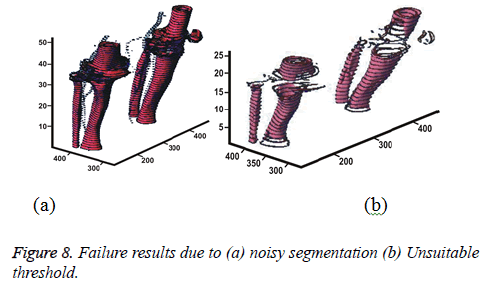ISSN: 0970-938X (Print) | 0976-1683 (Electronic)
Biomedical Research
An International Journal of Medical Sciences
Research Article - Biomedical Research (2017) Volume 28, Issue 8
3D bones segmentation based on CT images visualization
1MaGIC-X UTM-IRDA Digital Media Centre Universiti Teknologi Malaysia, Skudai, Johor, Malaysia
2College of Computer and Information Systems Al-Yamamah University Riyadh, Saudi Arabia
3College of Computer and Information Sciences Prince Sultan University Riyadh, Saudi Arabia
- *Corresponding Author:
- Mohd Shafry Mohd Rahim
MaGIC-X UTM-IRDA Digital Media Centre
Universiti Teknologi, Malaysia
Accepted date: January 9, 2017
Currently, in the medical imaging, equipment produces 3D results for better visualization and cure. Likewise, need of capable devices for representation of these 3D medicinal images is expanding as it is valuable to view human tissues or organs straightforwardly and is an immense support to medical staff. Consequently, 3D images recreation from 2D images has attracted several researchers. The CT images normally composed of bones soft tissue and background. This paper presents 3D segmentation of leg’s bones in Computed Tomography images (CT scan). The bone section is extracted from each 2D slice and is placed in the 3D space. Surface rendering is applied on 2D bone slices. The data is visualized via multi-planar reformatting, surface rendering, and hardware-accelerated volume rendering. At last, the paper presents an enhanced technique to reproduce 3D bone segmentation in medicinal images that exhibits promising outcomes as compared to the techniques reported in literature. The proposed technique involves contour extraction, image enhancement, segmentation, outlier reduction and 3D modelling.
Keywords
3D imaging, 3D segmentation, Image visualization, CT images
Introduction
Medicinal imaging is a progressing filed, several issues such as noise removal, contrast enhancement, visualization and segmentation of tissues are still fresh [1]. 3D visualization from 2D images is need of medical doctors for better visualization of tissues and treatment. Nonetheless, significant endeavours have been done in biomedical and biomechanical fields to help therapeutic applications. These endeavours have been leaded to make novel techniques for finding and treatment of numerous fatal diseases and surgical operations. Medical imaging techniques being used frequently to scan organs inside human body include Computed Tomography (CT), Magnetic Resonance Image (MRI) and 3D-4D ultrasound. CT system utilizes X-beam to create images for specialist's better understanding of bones contrast; either CT or MRI equipment could provide clear contour of bone and soft tissues. However, current 2D visualization lacks of exhibiting high contrast and therefore 3D visualization is in high demand. 3D reconstruction of organs by using MRI and CT scan represents closer reality and shows better estimation within organs. MRI and CT images are used to reconstruct a 3D model of tissues and bones. Computer methods use these images to create 3D volume or surface. The goal of medical image visualization is to propose fixed steps to provide doctors with valuable comprehension of the images. The current research aims is to reconstruct 3D model of leg’s bones from its cross sectional CT images. The field of 3D visualization of medical image could be of high importance medical imaging and assistance to medical experts for cure and treatment [2,3].
The further paper is consists of three main sections. Section 2 presents the proposed approach, section 3 exhibits simulation results, analysis and finally, section 4 covers conclusion.
Proposed Approach
Indeed 3D models enable medical staff to visualize syndrome and to prepare treatment plans. Additionally, it is highly helpful in several surgical operations, dental cure and treatments.
In the proposed approach MRI and CT-scan generate parallel image slices from the selected organ. Image processing and computer graphic methods are used to generate 3D object from cross sectional images. The proposed approach is composed of four main steps that include image enhancement, image segmentation, 3D modelling and 3D visualization; exhibited in Figure 1. Further sections discuss each step in detail.
Data acquisition
Biomedical division of Universiti Teknologi Malaysia (UTM) is the main source of data acquisition. CT scan produces various cross sectional images of located organ. The image set includes distinct number of parallel images in 2D matrix format. Each image presents one slice of selected organ including bone, lobe and cartilage in grayscale format.
Contour extraction
Each image is composed of complex tissues. For 3D visualization of an organ, organ pixels are extracted from each slice. Accordingly, Contour extraction is employed to locate and extract pixels from region of interested organ. This process is composed of three sub-steps exhibited in next sub-sections [4].
Image enhancement
Normally, images are enhanced to improve their visualization for humans [5]. The histogram of one slice of CT images is exhibited in Figure 2. It is obvious that image’s pixels are less than 0.042 and has low range and contrast in histogram. Consequently, images are enhanced to stretch histogram from 0 0.042 to 0 1 domains exhibited in Figure 3. Finally, this function is applied on one slice of CT images set of leg bones to produce cross sectional image of leg bones and results are exhibited in Figure 4.
Domain mapping [a, b to c, d] based on transformation plan:

Say a=0, b=0.042, c=0, d=1

So 
Image segmentation
Segmentation is a critical step in the visualization process [6]. In this step, region of interest (bone) is segmented from rest of the image. Accordingly, thresholding is the first step in segmentation of images using different intensity and pixel values in foreground and background of image. Following thresholding, results thus obtained exhibits that bone region is brighter than other tissues. Thresholding capacity is characterized in Equation 4 to extract region of interest presented in Figure 5.
Outlier reduction
Indeed thresholding process distinguished bones from the background as exhibited in Figure 5. However, some regions have closer to rest of image such as background that have intensity values close enough to bone pixels. To reduce such similarity of pixels, outlier reduction process via morphological/opening operation is implemented as exhibited in Figure 5. Actually to reduce noises in images, smooth line segmentation process and to enhance image vision, opening and closing morphological operations are basic operation in image processing. The conducted experiments include one hundred segmented image slices taken from different part of legs exhibit that there are some island points not belongs to bones. This similarity is due to bones intensity with foreground pixels. Therefore, noises area calculated and removed using basic morphological operations in order to get clear bone region [7].
3D modelling
3D object constitutes of several parallel slices. Therefore, to visualize MR slices image, proposed technique is applied to create 3D image from 2D input images by placing parallel images in their own locations in 3D space.
Image segmentation and outlier reduction process is applied on five hundred CT slices taken from part of leg and 3D model is generated of these slices such that one slice of bone contour is placed on two dimensional spaces as presented in Figure 6a. Moreover, all contours need to be placed in own spatial position to illustrate a 3D model. Figure 6b illustrates 3D model of bone.
3D image visualization
Surface rendering and volume rendering are two basic techniques for generating 3D object from 2D slices [8]. However, both techniques have their own pros and cons. Surface rendering, places surface batches on contour point of each slice. It speeds up the process but some image’s points are missed during 3D image generation. On the other hand, volume rendering uses entire images to create perfect 3D image quality but it is high processor demanding.
Simulation Results and Analysis
The proposed technique is implementation to generate 3D visualization of the tested medical images of all bone slices. First, surface rendering is applied on 3D model to visualize 3D object. Figure 7 illustrates 3D visualization of leg’s bone from 2D image. However, for 3D visualization light is mandatory. Figure 7 is generated following lighting process. At this point, threshold value is important in two aspects. First, it avoids noisy segmentation that might cause an unclear visualization (Figure 8a) and secondly, due to inappropriate threshold, proposed technique is found unable to extract some slices during segmentation phase (Figure 8b).
Conclusion
Literature is evident that noteworthy research is directed in areas of biomedical image analysis and visualization. However, 3D medical imaging techniques are still in demand to assist medical staff for cure and treatment [9]. Accordingly, this research has presented an enhanced approach for 3D bones modelling of CT images. Moreover, in current research, medical images are 3D reconstructed using surface rendering. The proposed technique has five main stages including preprocessing, texture analysis, image segmentation, interpolation, surface fitting and visualization. The proposed approach could also be employed for other organs and file formats.
References
- Norouzi AR, Altameem MSM, Saba A, Rada T, Rehman AEA, Uddin M. Medical image segmentation methods, algorithms, and applications. IETE Technical Rev 2014; 31.
- Husham A, Hazim A, Saba M, Rehman T, Saleh AAJ. Automated nuclei segmentation of malignant using level sets. Microsc Res Techn 2016.
- Al-Ameen ZS, Rehman AG, Al-Dhelaan A, Al-Rodhaan MST. An innovative technique for contrast enhancement of computed tomography images using normalized gamma-corrected contrast-limited adaptive histogram equalization. J Adv Sig Proc 2015; 32.
- Nodehi AS, Al-Rodhaan G, Al-Dhelaan M, Rehman AST. Intelligent fuzzy approach for fast fractal image compression. J Adv Sig Proc 2014.
- Saba T, Rehman A, Al-Dhelaan A, Al-Rodhaan M. Evaluation of current documents image denoising techniques: a comparative study. Appl Artif Intel 2014; 28: 879-887.
- Muhsin ZFR, Altameem A, Saba A, Uddin M. Improved quadtree image segmentation approach to region information. Imag Sci J 2014; 62: 56-62.
- Saba TR, Altameem A, Uddin A. Annotated comparisons of proposed preprocessing techniques for script recognition. Neur Comput Appl 2014; 25: 1337-1347.
- Waheed SR, Alkawaz MH, Rehman A, Almazyad AS, Saba T. Multifocus watermarking approach based on discrete cosine transform. Microsc Res Techn 2016; 79: 431-437.
- Saba T, Al-Zahrani S, Rehman A. Expert system for offline clinical guidelines and treatment. Life Sci J 2012; 9: 2639-2658.
